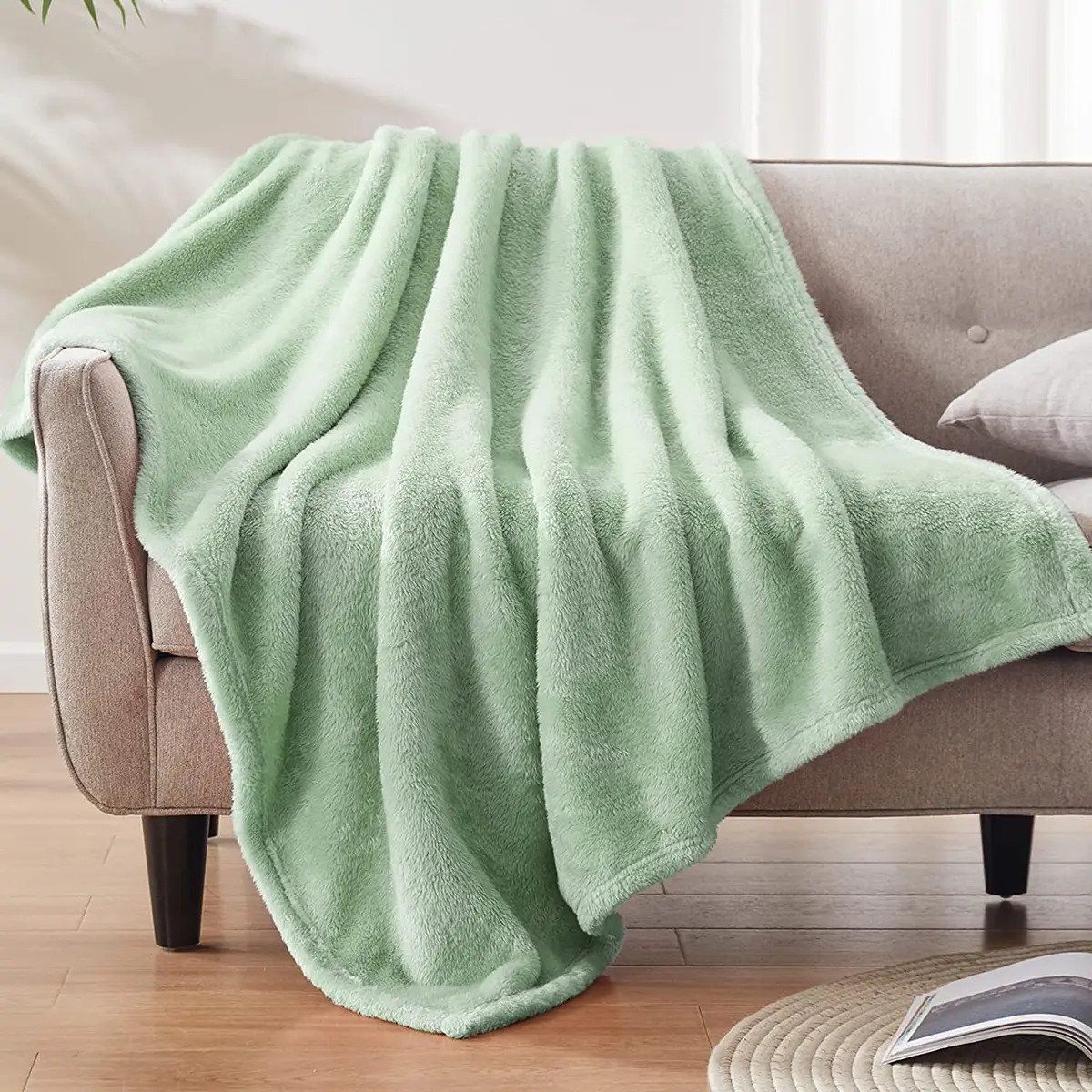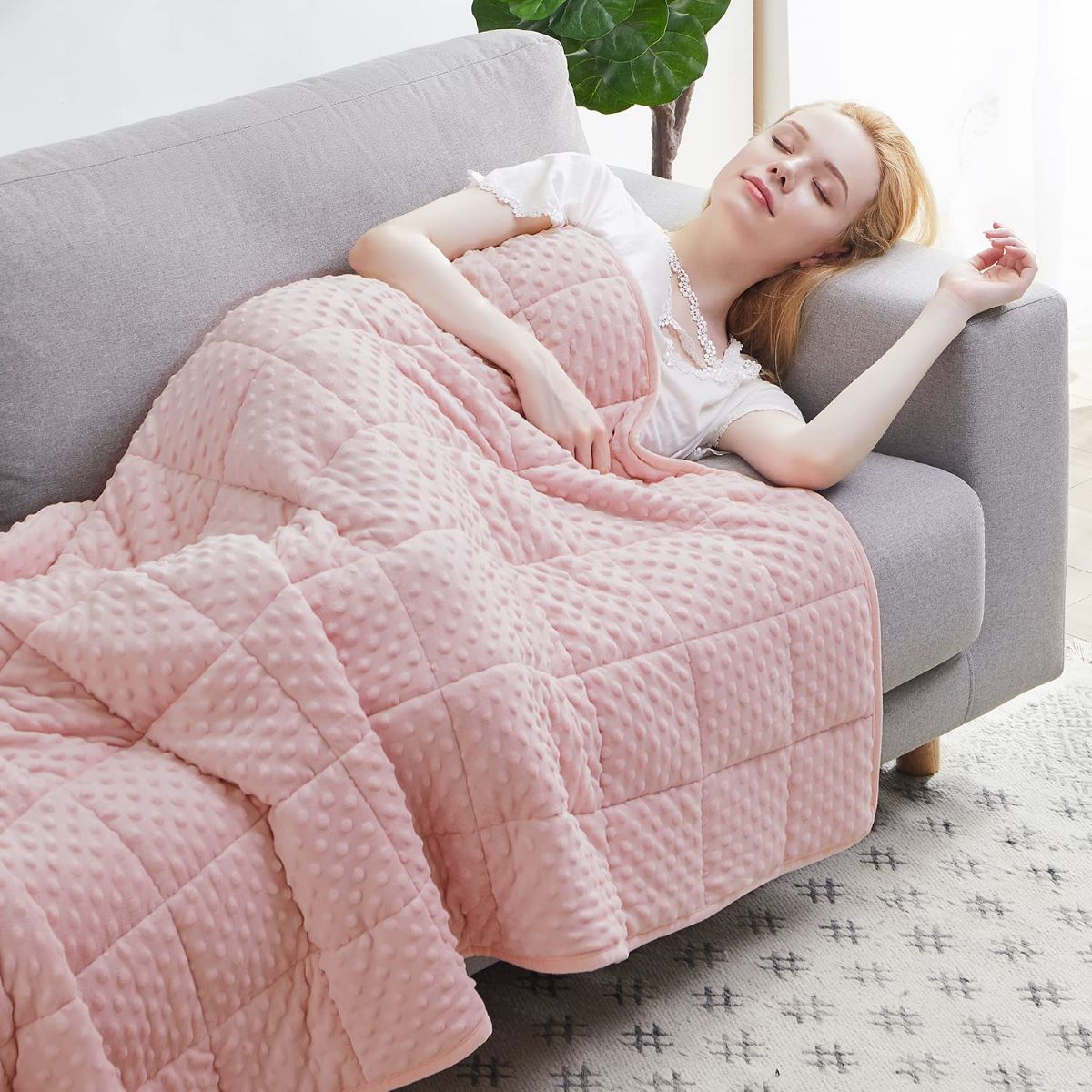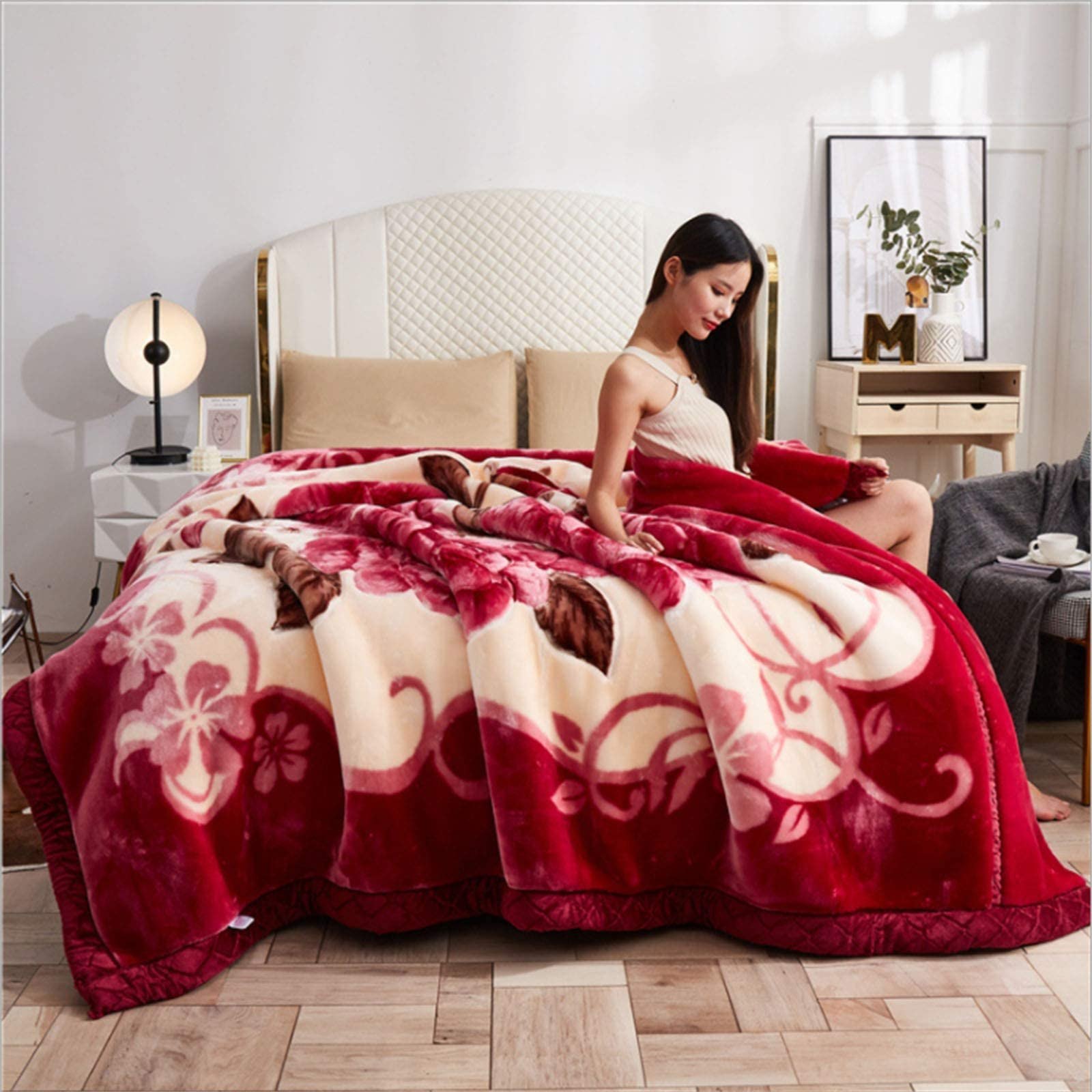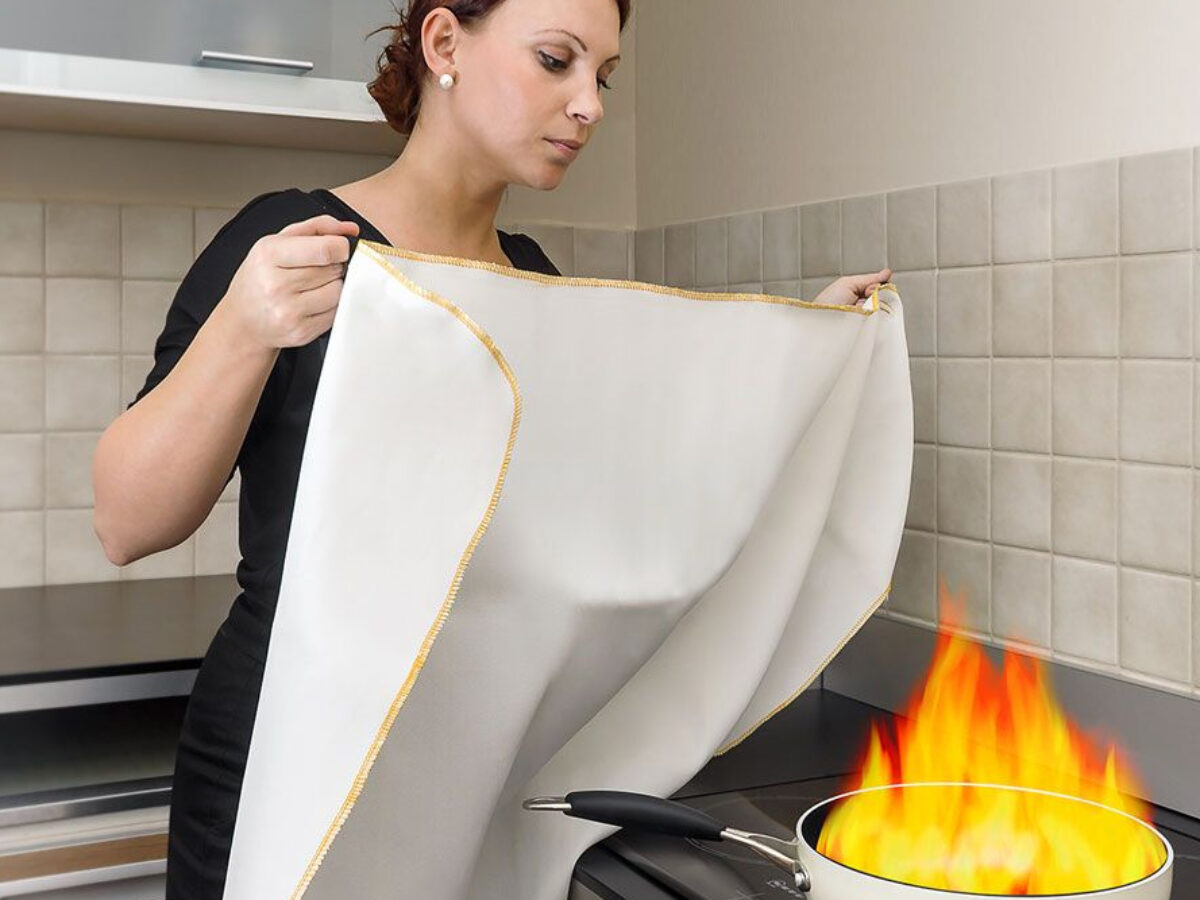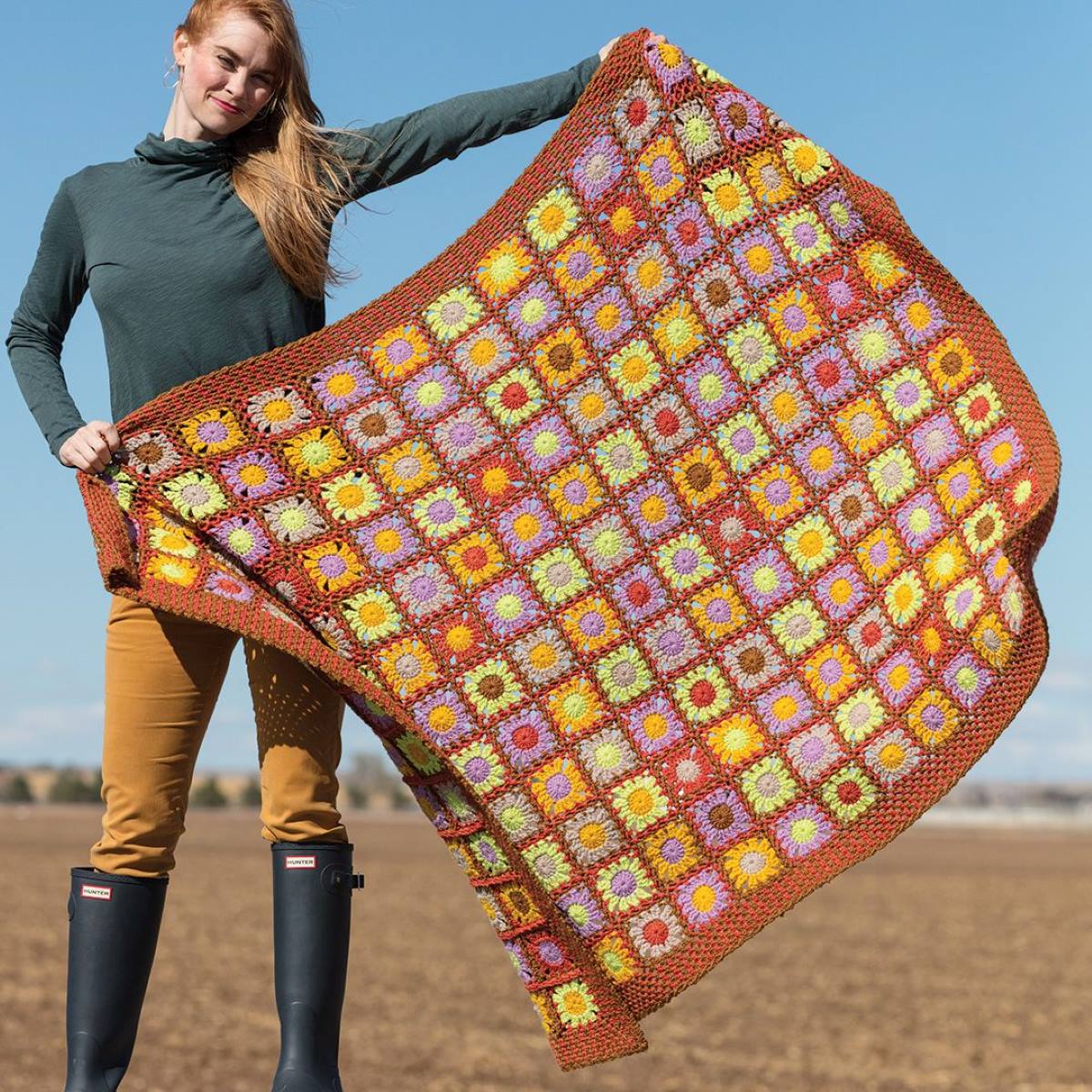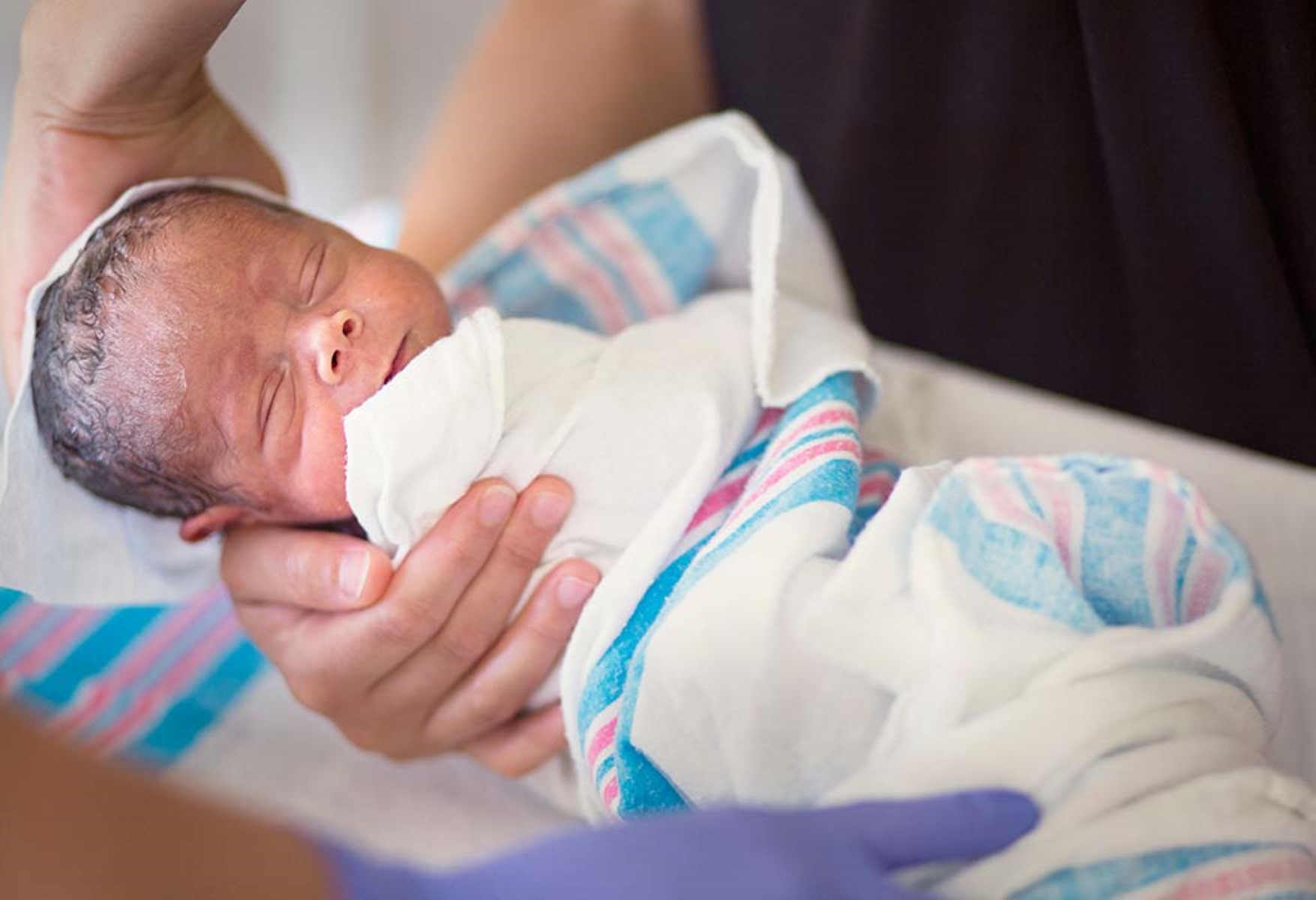

Articles
What Is A Receiving Blanket
Modified: January 5, 2024
Discover the benefits of using receiving blankets for your little one. Read our articles for valuable information and tips on finding the perfect blanket for your baby.
(Many of the links in this article redirect to a specific reviewed product. Your purchase of these products through affiliate links helps to generate commission for Storables.com, at no extra cost. Learn more)
Introduction
Welcome to the world of parenthood, where every little detail matters, especially when it comes to ensuring the comfort and safety of your bundle of joy. As a new parent, you are likely to encounter a plethora of baby products designed to make your life easier and ensure your baby’s well-being. One such essential item that often gets overlooked but is actually quite versatile and useful is the receiving blanket.
A receiving blanket is a multi-purpose cloth that is typically made from soft, lightweight fabric such as cotton or muslin. Although it may seem like a simple piece of fabric, the receiving blanket proves to be a lifesaver in many situations, offering a wide range of benefits for both babies and parents. Whether you’re a first-time parent or a seasoned pro, it’s important to understand the uses, features, and how to choose the right receiving blanket for your little one.
In this article, we will delve into the world of receiving blankets, explore their uses, highlight the features of a good receiving blanket, and provide guidance on how to choose the perfect one for your baby’s needs. So, let’s get started!
Key Takeaways:
- Receiving blankets are versatile essentials for new parents, serving as swaddling cloths, burping cloths, nursing covers, and more. Choosing a soft, breathable, and safe blanket ensures comfort and convenience for both baby and parent.
- Proper care and maintenance of receiving blankets are crucial for preserving their softness and cleanliness. Regular washing, stain removal, and storage in a clean, dry area help ensure the longevity and effectiveness of these essential baby items.
Read more: What Size Is A Baby Receiving Blanket
Definition of a Receiving Blanket
A receiving blanket is a versatile and essential item in a newborn’s wardrobe. It is a soft, lightweight, and often square-shaped cloth that is specifically designed for use with infants. Receiving blankets are typically made from breathable materials like cotton or muslin, ensuring that they are gentle against your baby’s delicate skin. They come in various sizes, but the most common dimensions are around 30×30 inches.
The name “receiving blanket” stems from its original purpose, which was to wrap and “receive” the baby after birth. The receiving blanket provides a cozy cocoon-like environment for your newborn, offering a sense of security and warmth. However, its uses go far beyond just swaddling.
Receiving blankets are incredibly versatile and can be employed in a variety of ways. Some of the common uses include:
- Swaddling: Wrapping your baby snugly in a receiving blanket mimics the feeling of being in the womb, providing comfort and promoting better sleep. Swaddling can also help to soothe a fussy or colicky baby.
- Burping cloth: Placing a receiving blanket over your shoulder while burping your baby helps protect your clothing from spit-up or drool.
- Diaper changing pad: Receiving blankets can be used as a clean and portable surface for diaper changes when you’re on the go.
- Nursing cover: If you prefer privacy while breastfeeding, a receiving blanket can be draped over your shoulder or chest to provide coverage.
- Tummy time mat: Spreading out a receiving blanket on the floor offers a clean and comfortable surface for your baby to explore during tummy time.
- Stroller or car seat cover: Receiving blankets can be used as a lightweight cover over your baby’s stroller or car seat to shield them from sunlight, wind, or nosy strangers.
- Baby carrier accessory: To add an extra layer of comfort and support for your baby in a carrier, you can fold and place a receiving blanket in the carrier where your baby’s head rests.
These are just a few examples of the many ways you can utilize a receiving blanket to make your parenting journey easier and more convenient. The versatility and practicality of receiving blankets make them a must-have item for new parents.
Uses of a Receiving Blanket
A receiving blanket is a versatile and essential item in your baby’s collection, providing numerous benefits and serving many purposes. Let’s explore some of the common uses of a receiving blanket:
1. Swaddling:
Swaddling is the age-old practice of wrapping a baby snugly in a blanket to mimic the feeling of being in the womb. The receiving blanket’s soft fabric and generous size make it perfect for swaddling. Swaddling can help soothe a fussy baby, promote better sleep, and prevent the startle reflex that may wake your little one.
2. Burping Cloth:
Babies often spit up or have occasional bouts of reflux after feeding. A receiving blanket can be placed over your shoulder to protect your clothes from any mess while burping your baby. The absorbent fabric of the blanket helps to catch and absorb spit-up, keeping you and your clothes clean.
Read more: What Is A Home Theater Receiver
3. Nursing Cover:
For breastfeeding moms who prefer privacy while nursing in public, a receiving blanket can be draped over your shoulder or chest to provide coverage. It allows you to breastfeed discreetly while maintaining eye contact with your baby.
4. Diaper Changing Pad:
When you’re on the go and don’t have access to a changing table, a receiving blanket can serve as a makeshift changing pad. Lay it down on any clean surface to create a clean and comfortable spot for diaper changes.
5. Tummy Time Mat:
Tummy time is an essential activity for your baby’s development. Placing a receiving blanket on the floor provides a clean and soft surface for your baby to lie on while strengthening their neck and upper body muscles. The blanket also acts as a barrier between your baby’s sensitive skin and the floor.
6. Stroller or Car Seat Cover:
Receiving blankets come in handy as lightweight covers for your baby’s stroller or car seat. They can shield your little one from sunlight, wind, and distractions, creating a cozy and comfortable environment when you’re out and about.
Read more: What Is The Best Home Theater Receiver
7. Comfort Object:
Babies often form attachments to certain items that provide them with a sense of security and familiarity. A receiving blanket can become your baby’s comfort object, providing them with a soft and familiar touch that can help soothe and calm them in various situations.
These are just a few examples of how a receiving blanket can be used. Its versatility and practicality make it a must-have item for any new parent. With a receiving blanket by your side, you’ll be sure to find creative uses that suit your baby’s needs throughout their early years.
Features of a Good Receiving Blanket
When it comes to choosing a receiving blanket for your baby, there are a few important features to consider. By selecting a receiving blanket with the right characteristics, you can ensure your baby’s comfort, safety, and overall satisfaction. Here are some key features to look for in a good receiving blanket:
1. Soft and Breathable Fabric:
A good receiving blanket should be made from soft and breathable fabric, such as cotton or muslin. These materials are gentle against your baby’s delicate skin and allow for proper air circulation, reducing the risk of overheating.
2. Lightweight and Versatile:
Opt for a receiving blanket that is lightweight and versatile. This ensures that it can be easily folded, stored, and carried around, making it convenient for outings or travels. The versatility of the blanket allows you to use it in various situations, from swaddling to burping.
Read more: What Is The Laser Level Receiver Called
3. Generous Size:
Consider the size of the receiving blanket. A larger size allows you to swaddle your baby effectively, ensuring they feel snug and secure. It also provides ample coverage when used as a nursing cover or tummy time mat.
4. Durability:
Look for a receiving blanket that is well-made and durable. It should be able to withstand regular use, frequent washing, and still maintain its softness and quality over time.
5. Easy to Clean:
Babies can be messy, so it’s essential to choose a receiving blanket that is easy to clean. Opt for machine-washable blankets that can handle frequent washing without losing their shape or softness.
6. Aesthetically Pleasing:
While not necessarily a functional aspect, the aesthetics of a receiving blanket are important to consider. Choose a blanket that appeals to your personal taste and matches your baby’s nursery decor. With a wide range of colors, patterns, and designs available, you can find a receiving blanket that is not only functional but also visually appealing.
Read more: How To Receive Television Signal
7. Safety Considerations:
Ensure that the receiving blanket meets safety standards. Avoid blankets with loose stitching, embellishments, or anything that could pose a choking hazard to your baby. Also, be cautious with blankets that are too thick or heavy, as they can increase the risk of overheating or suffocation.
By considering these features, you can confidently choose a receiving blanket that meets your baby’s needs and provides both comfort and functionality. Remember, every baby is different, so feel free to experiment with different blankets until you find the perfect one that your little one loves.
How to Choose the Right Receiving Blanket
With countless options available in the market, choosing the right receiving blanket for your baby can feel overwhelming. Here are some key factors to consider to help you make an informed decision:
1. Material:
Opt for a receiving blanket made from soft and breathable materials such as cotton or muslin. These fabrics are gentle against your baby’s skin, hypoallergenic, and allow for proper air circulation to prevent overheating.
2. Size:
Consider the size of the receiving blanket. Choose one that is large enough to easily swaddle your baby, providing a secure and cozy environment. A generous size also ensures that the blanket can be used for multiple purposes, like a nursing cover or tummy time mat.
Read more: What Is A Fleece Blanket
3. Weight:
Look for a lightweight receiving blanket. This makes it easier to fold and carry around, especially when you’re traveling or on the go. Avoid blankets that are too thick or heavy, as they can increase the risk of overheating.
4. Versatility:
Consider the versatility of the receiving blanket. Look for features like multi-purpose functionality, such as being suitable for swaddling, burping, nursing, and tummy time. A versatile receiving blanket provides excellent value for money and saves you from purchasing separate products for different purposes.
5. Care Instructions:
Check the care instructions for the receiving blanket. Opt for machine-washable blankets that are easy to clean and maintain. This ensures that you can keep the blanket fresh and hygienic, ready for your baby’s next use.
6. Safety:
Prioritize the safety of the receiving blanket. Avoid blankets with loose threads, embellishments, or anything that can pose a choking hazard to your baby. Additionally, make sure the blanket does not have any potentially harmful chemicals or dyes that could irritate your baby’s skin.
Read more: What Is A Swaddling Blanket
7. Aesthetics:
Consider the aesthetic appeal of the receiving blanket. Choose a design and color that suits your personal preference and complements your baby’s nursery decor. Remember, you will be using the receiving blanket frequently, so it’s worth selecting one that you find visually pleasing.
It’s also helpful to seek recommendations from other parents or read reviews online to gain insights into the quality and performance of different receiving blankets. Ultimately, selecting the right receiving blanket involves finding a balance between comfort, functionality, safety, and your personal preferences. By considering these factors, you can choose a receiving blanket that not only keeps your baby cozy but also brings joy and convenience to your parenting journey.
Care and Maintenance of Receiving Blankets
Proper care and maintenance of receiving blankets are essential to ensure their longevity, softness, and cleanliness. Here are some tips to help you keep your baby’s receiving blankets in the best possible condition:
1. Washing:
Before using a new receiving blanket for the first time, it is recommended to wash it. Follow the care instructions provided by the manufacturer, as different fabrics may require different washing methods. Most receiving blankets can be machine-washed with a gentle detergent on a delicate or low-temperature cycle. Avoid using harsh chemicals or fabric softeners, as they can irritate your baby’s skin.
2. Drying:
After washing, carefully read the drying instructions on the label. In most cases, receiving blankets can be tumble-dried on a low heat setting or air-dried. Avoid using high heat, which can damage the fabric or cause shrinkage. If possible, hang the blanket to dry in a well-ventilated area to maintain its shape and softness.
Read more: What Is A Security Blanket
3. Stain Removal:
Inevitably, receiving blankets may encounter spills or stains. It’s important to tackle stains promptly to prevent them from setting. Treat stains with a gentle stain remover or a mixture of mild detergent and warm water. Gently blot the stain with a clean cloth, and avoid rubbing vigorously to prevent damaging the fabric. After treating the stain, wash the receiving blanket as usual.
4. Folding and Storage:
When not in use, fold the receiving blankets neatly and store them in a clean and dry area, away from direct sunlight and moisture. If you have limited storage space, consider using vacuum-sealed bags to minimize the amount of space they occupy. Be mindful not to stack heavy items on top of the folded blankets, as this can cause wrinkles or damage the delicate fabric.
5. Regular Inspections:
Regularly inspect your receiving blankets for any signs of wear and tear, loose threads, or weak seams. If you notice any damage, it’s best to retire the blanket to ensure the safety of your baby. Replace worn-out receiving blankets with new ones to maintain their quality and effectiveness.
6. Rotate and Refresh:
To ensure equal wear and tear, rotate through your collection of receiving blankets. This will prevent any one blanket from becoming overly worn or faded. If possible, invest in a few different sets of receiving blankets to provide variety and freshness for your baby.
By following these care and maintenance tips, you can preserve the quality and softness of your baby’s receiving blankets. Regular upkeep ensures that they continue to provide your little one with the comfort and security they deserve.
Read more: What Is A Flannel Blanket
Conclusion
Receiving blankets may seem like simple pieces of fabric, but they play a vital role in ensuring the comfort, safety, and convenience of both babies and parents. From swaddling to burping, nursing to tummy time, a receiving blanket is a versatile and essential item in a newborn’s collection.
When choosing a receiving blanket, consider features like soft and breathable fabric, a generous size, lightweight nature, and versatility in its uses. Opt for a receiving blanket that is easy to clean, durable, and meets safety standards. Additionally, choose a blanket with designs that appeal to your personal taste and complement your baby’s nursery decor.
Proper care and maintenance of receiving blankets are crucial to maintaining their softness and cleanliness. Follow the washing and drying instructions provided by the manufacturer, promptly treat stains, and store the blankets in a clean and dry area when not in use. Regularly inspect the blankets for any signs of wear and tear, and replace them as needed to ensure your baby’s safety and comfort.
In conclusion, receiving blankets are small but mighty essentials in the world of parenting. Their versatility, softness, and practicality make them indispensable for new parents. Whether you’re swaddling your newborn, using the blanket as a nursing cover, or providing a clean surface for diaper changes, a receiving blanket is a must-have item that brings comfort and convenience to your parenting journey.
Investing in high-quality receiving blankets that cater to your baby’s needs will not only provide a cozy and secure environment but also make your life as a parent easier. So, embrace the warmth and functionality of receiving blankets and give your baby the comfort they deserve.
Frequently Asked Questions about What Is A Receiving Blanket
Was this page helpful?
At Storables.com, we guarantee accurate and reliable information. Our content, validated by Expert Board Contributors, is crafted following stringent Editorial Policies. We're committed to providing you with well-researched, expert-backed insights for all your informational needs.

